Our memories—a cloud of past experiences and emotions that fade in and out of view as they swirl around in our minds—are not something that we have absolute command of. Like the waves of the ocean, they crash upon our shores at moments we can’t control, receding from our grasp like the returning tide. At any one moment, we can feel a heightened sense of clarity around our recollection of a particular experience, but with the constant march of time and the degradation of our minds, inevitably memory slips from our grasp.
This ebb and flow is one of the central obsessions of WANE INTO IT, the new album from the Portland-raised, now Los Angeles-based musician Kyle Bates, aka Drowse. WANE INTO IT is not just concerned with the things we do and don’t remember, but more crucially the ways we try to control the way we will be perceived in the memory of others, and the way we perceive our memory through the passage of time and the warped funhouse mirror that is the internet. The record finds Bates wading through a murky past and uncertain present in a nonlinear fashion, arriving at brief moments of lucidity amid the haze of substance use, prescription drugs, depression, and disconnection. Its bleary-eyed headspace is made clear on the album’s opening track:
“Now I flow / In the abstraction of memory /Gin in the bathroom/ UNTRUE in headphones / Trying to fall asleep.”
Like much of the output from West Coast experimental label The Flenser—which ranges from the sludgy, Jesus Lizard-worshiping noise metal of Chat Pile to the self-described “Heaven Metal” of Midwife—WANE INTO IT could never be mistaken for upbeat, sunny day listening. More in the vein of slowcore pioneers like Carissa’s Weird and Red House Painters than the metal-adjacent bands that The Flenser is most known for, the placid-yet-pained atmospheres of WANE INTO IT feature a much softer sonic palette than his labelmates, while possessing the same aura of doom and gloom.
Blending together elements of slowcore, ambient, and folk, WANE INTO IT has its moments of noise and distortion that recall earlier Drowse releases, but this time the album floats in and out of these heavier sections with a deceptively seamless ease. Besides the massive crunching riff (the unmistakable guitar tone of Midwife’s Madeline Johnson) on album opener “Untrue In Headphones,” WANE INTO IT is Drowse’s least hazy album sonically, while also his most frankly personal and unvarnished in some of its lyrics. In particular, Bates has been candid in the album’s press materials and interviews surrounding the release about how the album was inspired in large part by an incident involving a family member with plans to end their life who held a bizarre “living-wake” gathering, sending Bates down a rabbit hole of “thinking about the way that we construct our own stories of ourself, and the ways that we want to be remembered.”
This theme of legacy and memory (as well as the haunting specter of mental illness and degenerative memory loss in his family) runs like a current through WANE INTO IT, but to imply that this record is some sort of confessional or straightforwardly autobiographical work would be a misrepresentation. In the same way that the sonic clarity of the record waxes and wanes, the opacity of its storytelling exists on a constantly shifting axis. Bates is hyper self-aware of how any attempt at demystifying his work to give you a true sense of “knowing” him is by its very nature an illusion, best represented by this echoing pair of lyrics from “Mystery Pt. 2” and “Three Faces (Cyanoacrylate) respectively:
“I’d completely lost my mystery / I’d been seen / When you asked / Do you really think you know me?”
And:
“I know no one / And no one knows me / Is knowing actually a real thing? / Is it all just thought and feeling?”
WANE INTO IT makes its home in this murky gray area between knowing and feeling, in the contradictions of wanting to be seen and understood by others while being trapped in the isolation of our own consciousness. It attempts to capture the uncanny valley between the vivid certainty with which we feel like we can recall something from our past and the way it really happened. The difference between the way we try to present ourselves and the way we are actually seen. The futility of trying to tell a version of our life story through art or on our social media profiles as a way to exert some semblance of control over our legacies and the narrative of our lives, and the way that only drives us further from any kind of “true” understanding of self—until all we are left with is, “A memory of a memory, a story of self controlling me.”
By taking his folk/slowcore songs and then assembling and arranging them through the production techniques of electronic music, previous Drowse records had a snowglobe-esque quality that could at times feel like being trapped in Bates’s insular, internal world. Whereas WANE INTO IT shows Bates not only collaborating more with other musicians but also turning his lens of reflection outward, allowing his stream of consciousness musings to float out into open space and intermingle with the world around him.
Over email, I caught up with Bates about the process of making WANE INTO IT, the work of other artists that directly inspired the album, and more. That interview has been condensed for time and clarity below:
First off, I wanted to ask you a bit about the recording process. WANE INTO IT was recorded across a number of different locations, but the album feels very cohesive in the way all the different recordings are stitched together. There are several multi-song runs that are connected as well as songs that evolve with distinct sections over the course of their runtime, and I was wondering if you generally had the big picture of what each song/larger section of the album was going to be going in? Or did these songs evolve in a more free-flowing process where you were collecting all these bits then finding ways to assemble the puzzle pieces later?
Kyle Bates: My process was a bit of both, gathering fragments that clarified a bigger picture as time wore on. “Untrue in Headphones” and “Mystery Pt. 2” were the first songs I wrote/recorded (these are usually simultaneous practices for me) after my last album, LIGHT MIRROR, was released in 2019. “Three Faces (Cyanoacrylate)” was the third song written, expanding on ideas from the first two and magnifying some of their aural experimentation. The song’s twisty second half was a direct result of this sonic-parsing-out.
Constructing an album is a process of mapping and sometimes I circle back to add more detail to an area. This is the case with “(Ashes Over the Pacific Northwest),” which was composed as an extended coda for “Mystery Pt. 2” for a version of it that I made as part of my audiovisual piece, Failing Memory Theatre for Roadburn Redux. I ended up loving where “(Ashes)” ran with the Subharmonicon and organ sounds, as well as the image of the ashes from “Mystery Pt. 2” spreading out to different personally significant locations in the Pacific Northwest, so I made a new mix of both songs for the album.
This malleable process is reflected in my approach to collaboration and gathering sounds in general (I always carry a field recorder with me, to spontaneously and/or pointedly document musical-world-moments). For instance, the drums at the end of the title track are performed by my friend Adam Troy. I invited him to record one day in a percussion room at the Center for Contemporary Music. I had a trust in Adam’s ability to create interesting rhythms, and no notion of where they might end up. It worked. The violin part in the middle of “Three Faces (Cyanoacrylate)” was much more planned out: my friend Taylor Malsey came over and we tracked multiple improvised takes on that specific section. We then meticulously parsed through and layered them until it sounded how we’d imagined. Similarly, I worked with Lula Asplund, Madeline Johnston, and Alex Kent because I love their music and the songs specifically called for their unique voices.
This album features a lot more acoustic guitar than previous Drowse records, with a clean, warm tone that’s different from the haziness and heaviness that defines a lot of your work. Particularly I’m thinking of the moments in “Mystery Pt. 2” where it feels like the fog that hangs around your music suddenly clears and gives way to the beautiful fingerpicking. Especially given the way the album repeatedly makes reference to losing and deconstructing mystery, was it your goal to make this record something more personal and open? And how do you balance wanting to be more straightforwardly personal and intimate writing about your experiences without deconstructing the mystery and ambiguity of your music entirely?
KB: Well I’ve been incorporating acoustic guitars into Drowse since “Melt” from SOON ASLEEP and have continued to include them on most releases. Songs like “Break,” “Klonopin,” or “Bipolar 1.” These acoustic-tinged songs are ones I often return to live, especially when playing solo, and sometimes I imagine Drowse as a secret folk project! You are right though, the “haze” being stripped back on “Mystery Pt. 2” and other moments of WANE INTO IT, very much highlights the acoustics. The less-reverbed-out vocals also add to that sense of intimacy.
You are spot-on about this “loss of mystery” being reflected in the clarity of the album. Although there are more sounds and instruments than other records, each is given its own space. LIGHT MIRROR was partially about trying and failing to be more open and constructing barriers between myself and the world in the process; one thread through WANE addresses the emotional agoraphobia that comes with trying to live openly: shrouding yourself in mystery is easier than being an anxious and honest person, but what does putting personal lyrics to song do if not add a layer of mystery to the words? “Personal songwriting” might be an oxymoron, artifice is inescapable.
On one level WANE INTO IT is the least directly personal Drowse record—I’m mostly not singing about living with Bipolar 1 disorder or other mental health related experiences that were the concerns of a lot of my previous work. This is my most external record, I’m covering stuff like the Internet, and how self-memorialization (my own included) makes me feel weird, the relationship that other people have with suicide, and the lives of “famous” sound artists, as well as car crashes I haven’t experienced, mechanical memory, witnessing family member’s memories fade with age etc. Don’t get me wrong, self-critique is still the driving force behind Drowse—it is something that I deeply believe we could all use more of. But “openly” turning inwards, without trying to express how that reflection has shaped my relationship to the world, would just be hiding again. Raw internality without the contours of external context (opinions and actions) is a more blurry mystery.
The album and single artwork of WANE INTO IT features photography of natural landscapes, particularly the beaches of the Pacific Northwest. How did the places you recorded this album influence its sound and concepts, and what personal significance do those photos have for you?
KB: A majority of the album was recorded over three years while I lived in the Bay Area and LA during the pandemic. I’d never lived away from the Pacific Northwest for that long—most of my life has been spent in Portland OR, and WA—and didn’t have many chances to return because of the virus. I wouldn’t consider this a “pandemic record,” since I began writing it in Fall 2019 and COVID-19 isn’t addressed at all. But, the cover art does reflect this memory-of-a-memory nostalgia I was feeling due to the virally heightened distance from my family and home. I was searching for a depiction of Haystack Rock at Cannon Beach when I came across those beautiful photographs by Nyree Watts. When I reached out she sent me a photo of this spirit-like dog on the beach at night, the artwork for “Three Faces.” This photograph shocked me. It resembles a “memory” I have from when I was four. I was at home sick with hives due to an allergic reaction to seizure medication: that same black dog would walk into my bedroom and talk to me when my parents were gone!
One of my lifelong friend’s family lived at Cannon Beach when we were growing up. I would go visit and stay with them and we would often play and collect shells and look at the sea creatures around Haystack Rock. He died of an overdose years later and that had an effect on me and the way that I thought about things when I was feeling suicidal in my early 20s. The cover art is partially a tribute to him. My family also visited this beach frequently when I was growing up and my sister and I would escape to that rock when my parents were fighting a lot before they got divorced. Years later I had some strange, powerful drug experiences there, too—MDMA, mushrooms. Now the rock shows up in recurring dreams.
Aesthetically, I love how the cover photo invokes this sense of another place, or world, that feels both separate and connected to ours. That’s a feeling I was reaching for with the Light Mirror cover art as well, and with the sound of Drowse in general. Many of the people that I’m close with share this impression of belonging outside of the world, of leaning up against it, while also being (pleasurably? frustratingly?) tethered to it. We live in a system that thrives off of making people feel detached.
Your music is very clearly in a specific lineage of artists from the Pacific Northwest; and in addition to ones you cite as inspiration like Grouper and The Microphones, I also hear flashes of artists like Carissa’s Weird and Elliot Smith on this new album. I’m curious, what do you think it is about the PNW area that produces so much slow, gloomy, melancholy music in this vein? Is it just the weather? Or is there some other explanation?
KB: I’m intentional about who and what I choose to reference in bios and all that. I often quote my influences directly in lyrics and musically, too. I do this to be clear about what some of my thoughts and sounds are in conversation with. New meanings can emerge when the listener isn’t being distracted by listening in a way that aims to “place” or “pick apart” the musical influences. It’s important to me as an artist to acknowledge the lineage I am working within (or trying to deconstruct, as it may be) in order to avoid adding more repetitive media to the pile. I understand how genres can be a helpful shorthand, but I don’t understand the impulse that people have to, for instance, “start a shoegaze band” using the same tools and techniques that I can listen to in their perfect form on an album from 1991.
Elliot Smith and Carissa’s Wierd are both ingrained influences. I got to see a partial CW reunion in the Bay right before the pandemic and it was devastating when they played “Drunk W/ the Only Saints I Know.” I’m from Portland so Elliot Smith is inescapable, he’s probably the first “singer-songwriter” I really connected with when I was a little elitist metal/punk kid. ELLIOT SMITH is my favorite album of his. My friend/a person I dated in high school’s dad was close with him and had one of his guitars! Any indie kid you meet from my city can probably give you some story like that.
The rain and pine needles clearly have something to do with the gloom. All of the bands you mentioned sound better when listened to in that weather. There is a musical culture/lineage and language that has been building on itself up there forever, and the bands influence each other directly. The melancholy is passed on. This leads to some transcendent music, although I really dislike the “locals-only” scene vibe that can come with it… an invisible barrier that people rarely break out of (at least in Portland). It’s both a superiority and inferiority complex. This is mirrored by the fact that those who grow up there don’t often leave.
People hang out in bars all the time, tend to self-isolate in the winter (here’s Johnny!), and many of my friends drink heavily when they can (including myself). It’s funny how you can sort of map areas that don’t get much sun to areas with lots of drinking, an easy recipe for depression. There are other geographic/economic/social/historical factors at play in the region that probably lead to a certain “cold,” depressive, or the sometimes closed off, guarded, and passive aggressive disposition that is common in the Pacific Northwest. I guess Washington and Oregon are good states for weirdos who want to be far away from everything, like my mom distancing herself from a repressive religious family. I like to joke that we are issued copies of Twin Peaks at birth instead of bibles.
To make it simple: Drive to Bellingham from Portland on I5 and look out your window at endless clouds and sky; this is our music.
I want to ask you about two albums that you deliberately namedrop on WANE INTO IT. The album starts with an intro track featuring Midwife called “Untrue In Headphones,” and I was curious what you find most compelling about Burial’s music and UNTRUE, specifically? And how do you try to bring that inspiration to the style of music you make?
KB: My answer about making influences clear in order to gesture towards new listening experiences applies here. Burial’s music has a direct sonic influence that can be heard in things like the faded quality of the drums on “Blue Light Glow,” my rhythmic usage of field recording, and my tendency to sample, pitch, and repurpose voices. I think Burial has described his music as the distant memory of a club, so a thematic link is there, and his music is also extremely melancholy! He plays a lot with fidelity to accentuate the physicality of sound, which is something I strive for, always reamping sounds or bouncing them to fucked up cassettes and back etc. I know I said I think of it as secretly folk sometimes, but Drowse is essentially an electronic project in the way that the songs are created.
The name of that song is a bit of a hyper-referential joke that I’m sure only I find funny: It’s a play on the title of a Mount Eerie song that itself directly references/quotes Björk lyrics. The emotional meaning of the word “untrue” is at play as well. More literally: the song begins with a scene of me on a train listening to Burial and sneaking gin in the bathroom, although it gets less self-loathing from there. UNTRUE is emotionally direct while still being opaque, but I mainly chose it ‘cause that’s what I was actually listening to. TRUANT / ROUGH SLEEPER is my favorite Burial release.
On the last song, there’s a lyric about being “Obsessed with REPLICA by Oneohtrix Point Never,” which is also a favorite album of mine. Although there isn’t necessarily an obvious sonic connection, that record is similarly obsessed with memory and the way our perception of the past and nostalgia gets twisted and manipulated. Can you talk a bit about your relationship to REPLICA and how you think it fits into the themes of the record?
KB: REPLICA was, and still is, a monumental album for me. It was released in 2011, right when I was starting to experiment with Ableton and realizing that any sound in the world could be music (I hadn’t encountered John Cage at that point), and that those sounds could even be melted down to make new, unheard sounds! Here was this masterpiece record that clearly illustrated those realizations through its use of tiny samples of ‘80s commercials to make sounds I’d never heard before. Suddenly, everything became possible with recording. The “rock band” mindset I’d had up until then was discarded. This would soon lead to what I named Drowse. Listen to the first Drowse release, SONGS TO SLEEP ON, and the “Andro” worship is obvious from the first second. You can even hear its ghost on a song like “Telepresence” from WANE INTO IT. It is partially responsible for getting me into experimental music, a musical path which led to where I’m at today, pursuing a sound-related doctorate degree and teaching recording.
The lyrics you mention are from “Ten Year Hangover/Deconstructed Mystery,” the last song on the album. On that song I am very plainly doing something I’ve been trying to untangle over the course of the previous tracks: self-memorializing. I’m recounting the birth of my project, and REPLICA was there. The fact that I was obsessing over an album about memory when I was 21, even though that person feels like a stranger to me now, is striking. It makes sense though: When I was 18 I had a psychotic break that resulted in an obscuring of my memories from before that time, a clear severance between the person before and after that loss of reality. The word memory has been repeating in my head ever since.
REPLICA seems to be mostly about cultural, rather than personal, memory, though. When it was released, Daniel Lopatin raised some ideas that have stuck with me. He talked about how certain sounds are judged in our cultural memory based on the time period in which they were first made, how every time we hear them, we are at once hearing all of our learned biases and years of negative criticism and associations.
On a practical level, I work with this idea all of the time: In Drowse “cheesy” Casiotones are layered with high end analogue synths, “dated,” plastic-y digital instruments, and acoustic sounds, all collapsing in the pursuit of textures that can communicate what words can’t. There is little regard for timbral connotations. On a conceptual level this applies to the way that we relate to art and media in general in 2022. Every opinion is formed and echoed in advance of our experience with a work, and most of these cultural consensuses are built on recent memories of whatever the previous related cultural consensus trend was. I think criticism is good and necessary. Barthes, and critical theory in general, are as big of an influence as any band on my music—and I write it, too, but it does feel increasingly rare for me to have a fully “present-tense” experience with a movie, book, or album, or even with significant global events.
Lastly, there are a lot of lyrics on this album about time, and the way that time intersects with memory. I’ve been thinking a lot in particular about the line “Internet collapses time” on “Blue Light Glow.” How do you think the internet and the way we document our lives online has changed our perceptions of memory and time?
KB: My above rambling is related… I think that the Internet is generally amazing, like it allows me to work on projects that wouldn’t happen otherwise (Midwife’s appearance on the album), maintain love and friendship with people in different cities, it’s probably the reason that anyone knows about my music, and it’s definitely the reason that we are doing this interview, not to mention the incredible potential it has for social good. I’m not “anti-Internet,” and I also don’t believe I have something profound or new to say about it, I’m only trying to work through my complicated relationship with it.
The Internet is one of those big picture concepts like death or memory, something that we will never fully understand, but will grapple with throughout our lives. Choosing to ignore it is like opting out of a part of being human at this point—people not-that-much-younger than me have existed their whole lives with this surfaced human collective (no longer un)consciousness. It has defined our relationship with the external world.
Our contemporary human consciousness is split: an awareness of the present moment, and a simultaneous awareness of how similar groups of people are experiencing that moment, or at least an awareness that we can find out at any time (and all the projections that come with that). This isn’t some individual/society binary, it is a synthesis, a person and their thoughts along with their interpretation of the thoughts of everyone else bouncing around in one skull, birthing a different perception. And, there has never really been a present, it’s all stacked memories and future projections (Bergson’s Cone of Memory). A memory of the letter “m” as I write this, a projection about how you might be reading it. The Internet underlines this reality and brings it to the surface of our lived experience. It’s a fucking wild experiment.
The “Internet collapses time” in relation to other people. It used to be that you would form an impression of someone and that impression would stick with you until the next time you saw them. Even if they had changed in the interim, you would have this frozen, slowly melting version of them in your head, an image that you change slightly each time you recall it. You are creating the other person, defining them (and maybe that’s sort of how cultural memory and cultural consensus used to work, too, we could more easily selectively reshape our memories of events as well as our memories of the reactions of others).
Now we are in a constant “present” of other people, we witness their changing constructions of self every day, and this image stays somewhat stable, as it is quickly updated. We have less agency in the creation of others, they are molding our perceptions of them in real time. We react and reconstruct ourselves—now we also have more agency in how we are perceived. Does this detach me further from an understanding of the self I was at 21, or two weeks ago, or help me to understand them more? The idea of an “essential” part of the self is slippery, do I release it? I know there are multiple selves—maybe their accentuated malleability is a positive thing? What about the persistent awareness of being in the flow of it all?
I can see why it’s scary in the same way that thinking too much about our ever aging/changing physical bodies can be scary, but I also believe that change and uncertainty are central to life, that nothing is ever fully stable or knowable. I’m trying to approach my unfolding digital/psychological conditions with creativity and curious reflection, fear is for death.
You can check out WANE INTO IT over on Bandcamp!



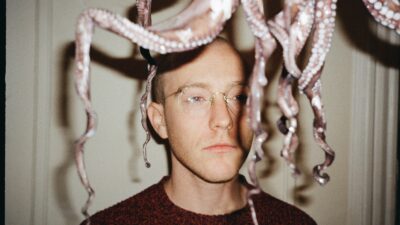
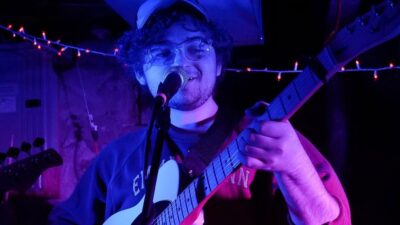
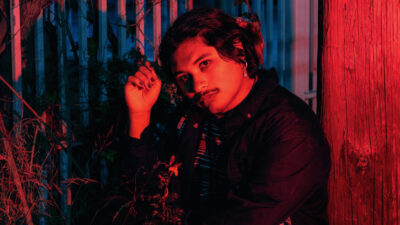
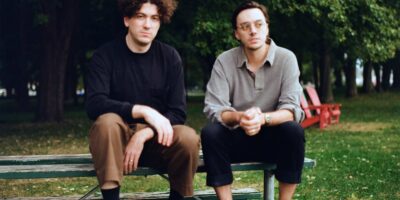



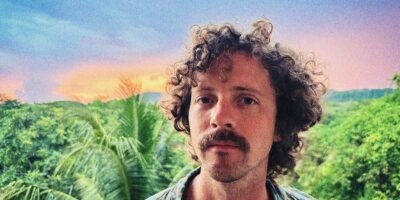
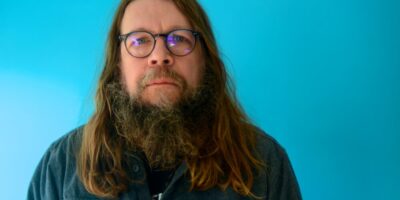


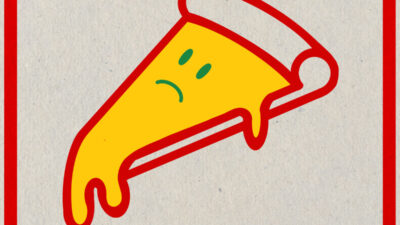
Comments